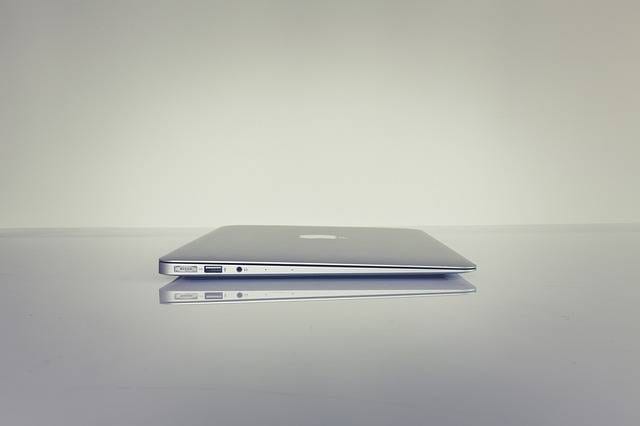We’re sure Windows users have heard (and are probably curious) about how a Mac “just works” right out of the box. From its safe and user-friendly system to its smooth and elegant functionality, it’s no wonder hundreds of thousands are making the change every year. Now that you’re about to do the same, you probably have a few concerns and questions in mind. Don’t worry, though—we’re here to help make sense of it all. Before switching from a PC to a Mac, here are a few helpful tips.
Tips for Making the Switch to a Mac
Familiarize yourself with the Mac OS (Operating System).
PCs and Macs are two vastly different systems and it’ll be wise to make yourself familiar with the latter beforehand. Visit the nearest Apple Store or try using a friend’s Mac when you’re not too busy. The learning curve may not be too steep, but you’ll need some time before you become comfortable working in an all-new operating system.
List down all the applications you need
Because Windows apps won’t readily run on a Mac, you may need to find alternatives to the ones you often use. Although some programs afford you the ability to switch between the two OS as part of their license, most don’t have this flexibility. It’s worth mentioning, though, that most of your Microsoft Office files readily work on Apple’s free productivity suite, iWork.
Know how to migrate your files
Moving data from your PC to a Mac may seem intimidating, but it’s actually much easier than you think. All you need to do is download the appropriate Migration Assistant and read Apple’s guide on moving data from a Windows PC to a Mac. Pay attention to what files can or can’t be moved, though. When you’re not too confident pulling it off on your own, you can always get any Apple Retail Store to do it for you.
Learn to set the right-click on a Mac
One look at a Magic Mouse, a MacBook’s trackpad, and a Magic Trackpad and you’ll probably wonder how to perform a right-click on a Mac. Fortunately, you can do this basic action even without a physical button. All you have to do is hold down the Control key while clicking. Or, if you’d rather enable it on your Mac, go to Systems Preferences > Trackpad or Mouse > turn on Secondary Click. Now, whenever you click with two fingers at the same time on the track pad, it will be just like you are right-clicking on a PC.
Be ready to mess up your muscle memory
Getting work done on a Mac the first time can be a pain. All those years of using Windows and the muscle memory you’ve created in the process are to blame for your initial struggles. Luckily, the Command button on a Mac often works just like the CTRL button does on a PC. To get your fingers acclimated to working on a Mac, begin learning these few keyboard shortcuts:
- Press keys Command (⌘) + A = Select all
- Press keys Command (⌘) + C = Copy
- Press keys Command (⌘) + V = Paste
- Press keys Command (⌘) + Q = Quit an app
- Press keys Command (⌘) + W = Close the front/active window
Back up your data prior to switching
This may be the most important thing to do prior to you diving into the new Apple ecosystem. To create a backup of the Windows data you’re bringing over to a brand new Mac computer, try these reliable backup methods. You may want to try saving data on the cloud, too.
A Windows Users Quick Guide on Using a Mac
Never used a Mac computer before? You’ll probably look for anything remotely related to how you do things on the Windows PC. Unfortunately, the MacOS looks and feels very different from any version of Windows you’ve ever used. Meaning, tough times may lie ahead of you as you give your MacBook a few initial tries.
To save you from such a frustration, we’ll tell you how to get started on an Apple operating system.
Getting Started
The first thing you may notice on a Mac desktop is that it doesn’t have a start menu. Instead, you’ll see the dock running along the bottom of the screen. By default, applications are found on the dock’s left side while folders and minimized windows appear toward the right. Running apps often have a dot or line under their icons.
So where’s Mac’s equivalent of a start menu? Well, it’s on top of the screen. It’s where you’ll find the familiar File, Edit, View … options for any active application. You’ll also find most of the functions on the Windows system tray (e.g. clock, Wi-Fi connectivity, and battery meter) sitting in the top-right corner.
Mouse & Keyboard
In the beginning, there are a few gestures you’ll have to master on a Magic Mouse or Magic Trackpad. Scroll through pages using a two-finger swipe or do the equivalent of a right-click with a two-finger click, for example. There are many more gestures you’ll have to be familiar with and you can find them under Trackpad or Mouse settings. Not sure where to find it? Simply search for it using the powerful Spotlight feature on the top-right corner of the screen (it looks like a magnifying glass).
You’ll also immediately notice the difference between an Apple keyboard and a PC’s. The command key now performs much of the tasks that the Windows key does on the Microsoft keyboard. Meanwhile, the option key is the equivalent of Windows alt key. And please don’t go looking for a backspace key because the Apple keyboard only has delete. Remember to use the command + tab combo (forget about alt + tab) to switch between applications, too.
Searching with Spotlight
As somebody totally new to the Mac, you’ll probably be looking around for files and programs on the computer. Windows users may not have much faith in a search function in general (thanks to years of putting up with the slow and difficult Windows search tool), but you’ll find Mac’s version of search much more reliable. You’ll find MacOS’ search engine (called Spotlight) in the top-right corner of the screen. It’s the magnifying glass icon you see in that corner and we recommend you use it deliberately. Whether you’re looking for an app, document, or system settings, you can trust the Spotlight to deliver results
For easier access to this powerful tool, press the keys command + spacebar.
Settings & Applications
As a Windows user, you’ll probably try tinkering with the operating system once in a while. If you choose to do so, access system settings using Spotlight or the dock. Keep this in mind when you’re configuring the network access or changing the wallpaper. Again, Windows switchers will have to forget they can just change the wallpaper with a right-click on the desktop.
You’ll also need to get yourself acquainted with the buttons you find on top of any open Mac application. Remember that the three top-left buttons are close (red), minimize (yellow), and expand (green). Keep in mind that closing a window on a MacOS using the red button won’t actually close the entire program. It’ll still be open and you may have to press the control key and click on its icon in the dock to quit the program. Another glaring difference you’ll notice is that the green one won’t maximize the window like it does on Windows. Instead, it enables you to expand or resize the window to fit the content.
In case you encounter an unresponsive program, perform the equivalent of the Windows Ctrl + alt + del by holding the Command-Option-Esc key. This will allow you to Force Quit the application. Another way to do this is to launch Activity Monitor by searching for it on Spotlight. This is Mac’s version of Windows’ Task Manager.
Power States
Can’t find the options to shut down, restart, or log out on your Mac? That’s easy. Find them by clicking on the Apple logo in the top-left corner of the screen.
Installing/Uninstalling Programs
Downloading new applications is streamlined on MacOS. Instead of watching an installation program copy files to your hard disk, a Mac copies the application file to your Applications folder. Some good DMG files (Windows’ equivalent of a program installer) will even show a graphical Finder shortcut to assist with the installation. Once you’re done with the installation and you want the new app to show on the dock, just drag the app from the Applications folder down to the dock.
In case you wish to get rid of an application on your Mac, the process is even simpler. There’s no need to uninstall programs manually at all. All you need to do is go into your Applications folder, click on the program you want to remove and drag it to the trash bin.
Malware Protection
Jumping from an oft-vulnerable OS, you’ll probably ask yourself what antivirus software to install on a Mac. Frankly, installing one may not even be necessary in Mac OS as long as you keep its default settings in place. Spyware and adware don’t get through easily, though some do manage to sneak by. In case you decide to get one, we recommend you disable it whenever updating the operating system. We’ve seen a few third-party anti-virus cause problems when Apple installs OS updates, after all.
Part of what keeps a Mac system secure is that you get a powerful security feature out of the box. The Gatekeeper helps protect you from downloading and installing any suspicious or malicious software. Apple beefs up its machines’ security further by implementing user verification to install any software that isn’t verified by Apple itself and doesn’t have a Developer ID. Your Mac comes with a reliable, built-in firewall, too.
Notification Center
You never have to miss a meeting, note, or any important engagements during the day on a Mac, thanks to this feature. Just click on the icon in the right side of the menu bar to view the Notifications Center. Enable your iCloud Drive and this well-built piece of functionality becomes even more powerful as you can see those same notifications on your iPhone and iPad. Meaning, you’ll always be in the loop no matter what Apple device is in front of you.
Going from an experienced PC enthusiast to a rookie Mac user is never easy. You’ll face a new set of challenges, but this guide should help you acclimate to a new OS faster. To shorten the learning curve further, check out Apple’s tips for Windows switchers.
Is there anything more you want to learn about moving from the PC to a Mac? Just give us a shout out below and we’ll do our best to clear out any confusion, pronto!


